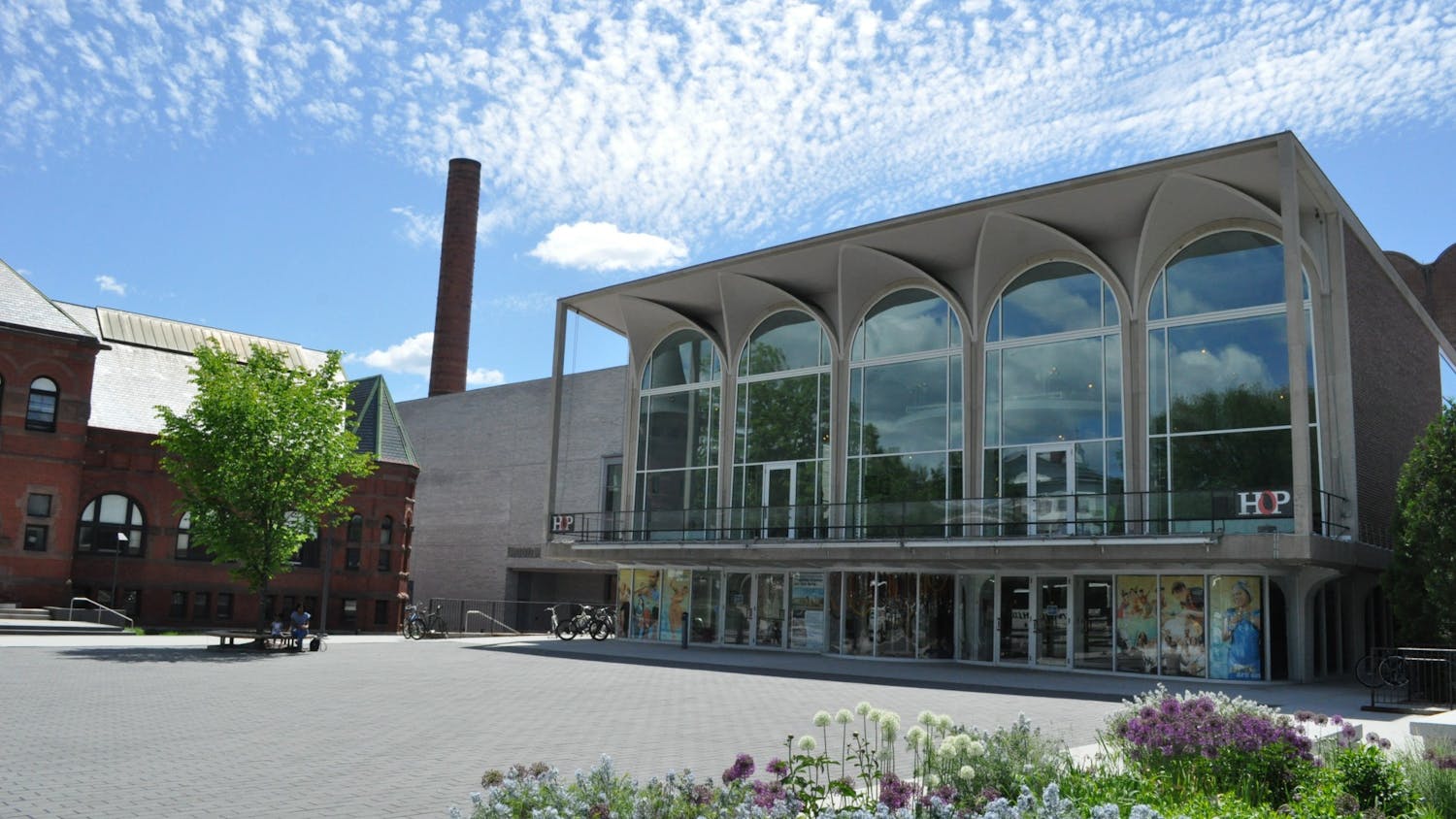What could accompany a silent Russian film with no discernible plot better than 70 minutes of banging on scrap metal?
Friday evening saw the Boston-based Alloy Orchestra prove that nothing else could, in their rendition of "The Man with the Movie Camera" (1929). This was not the first time, however, that the three-man ensemble and their self-described "Wall of Junk" graced the Spaulding stage to update silent classics with new and exciting scores.
"I went into [the Alloy Orchestra's 2006 performance of] The Phantom of the Opera' ten minutes late and I had no idea what I'd walked into," Dartmouth Film Society director A.J. Fox '09 said. Fox also pointed to the Orchestra's auditory reinterpretation of "Lonesome" "a sweet little romantic comedy that they turned almost avant-garde."
This time, the Orchestra shook new life out of Dziga Vertov's landmark film. The film is notable for its use of rapid juxtaposition editing, a technique described by Vertov's contemporary Sergei Eisenstein as a "collision" of images.
Friday night, following a brief introduction by Fox, the trio Terry Donahue, Ken Winokur and Roger Miller ambled on stage and took up their positions behind the "Wall of Junk." The contraption is a collection of various metal objects (ostensibly the "alloys" from which the group takes its name) suspended from and incorporated into a six-foot scaffold. This mishmash of coils, horseshoes and metal plates looms over a collection of synthesizers, various percussion instruments and even a lone accordion.
The sounds that the Orchestra produced from this motley collection of objects and instruments were wildly diverse. As the projector spooled to life, a huge wave of synthesized strings, played by Miller, declared the arrival of the overture: a bombastic, polytonal statement that stylistically evoked the works of Russian composers such as Stravinsky and Shostakovich.
The score took on a sense of hushed intensity as the film itself began, and our protagonist the man with the movie camera himself clambered atop a giant camera. Something auspicious was clearly on the horizon, and Vertov and the Alloy Orchestra worked in concert to heighten this tension.
Next we saw a deserted theater that came to life suddenly through the clever use of stop-motion animation. Vertov imparts a sense of magic and holiness to the theater space, echoed in the atmospheric score. As the light within the projector first illuminates, the on-screen orchestra begins to play, and the score suddenly roars large in a rapturous moment of cinema religion.
Almost from the outset, it was obvious that the Orchestra's score was, quite simply, perfect for Vertov's intense, quick and rhythmic editing technique. Percussive ostinatos permeated the score, seeming to be a tacit homage to the director, whose adopted pseudonym "Dziga" is a Russian onomatopoeia for the sound of film running through a projector's reels.
The film itself is an abstract visual ode to the very process of filmmaking. As Vertov shows us the titular man traveling through industrialized Soviet Russia with an eye toward the confluence of man and machine, the audience's role is always in question: at one moment we are watching an audience watching the film, at another we are the observant man with the movie camera and at still another we watch him at work.
Layered on top of this highly fluid theoretical structure, the Orchestra's score works within the Disney or Looney Tunes school of musical sound effects instead of operating as a group of Foley artists, they suggest sounds using musical cues. A rhythmic woodblock motif simulates the clop of hooves on cobblestone, chimes evoke the clangor of church bells and a seemingly never-ending snare line roars up like a steam engine.
Perhaps more impressive is the sense of unity that the score imparts on the hectic nature of the film an unexpected ability that Fox described as "something seemingly disorganized, but with a specific goal in mind."
The piece as a whole rides a series of cresting and collapsing waves of energy, intensity and tempo. At points, the cutting came so quickly that it was difficult to discern any sense of continuity whatsoever between what could be perceived as loaded images: a woman blinking, the flicker of shutters, the rush of trolley cars.
The film peaks like this several times throughout its 68-minute runtime, but no more intensely than during the final minute. Nearly every image shown in the film is on display, flickering by as we watch an editor's eyes scan back and forth with greater and greater rapidity. The Orchestra matched this breakneck pace.
And, all of a sudden, we were brought to the quite literally screaming conclusion an eye superimposed over a camera's closing aperture, then a smash to black. The Orchestra manages an incredible, visceral achievement a near-perfect artistic collaboration that transcends an eight-decade gap.



